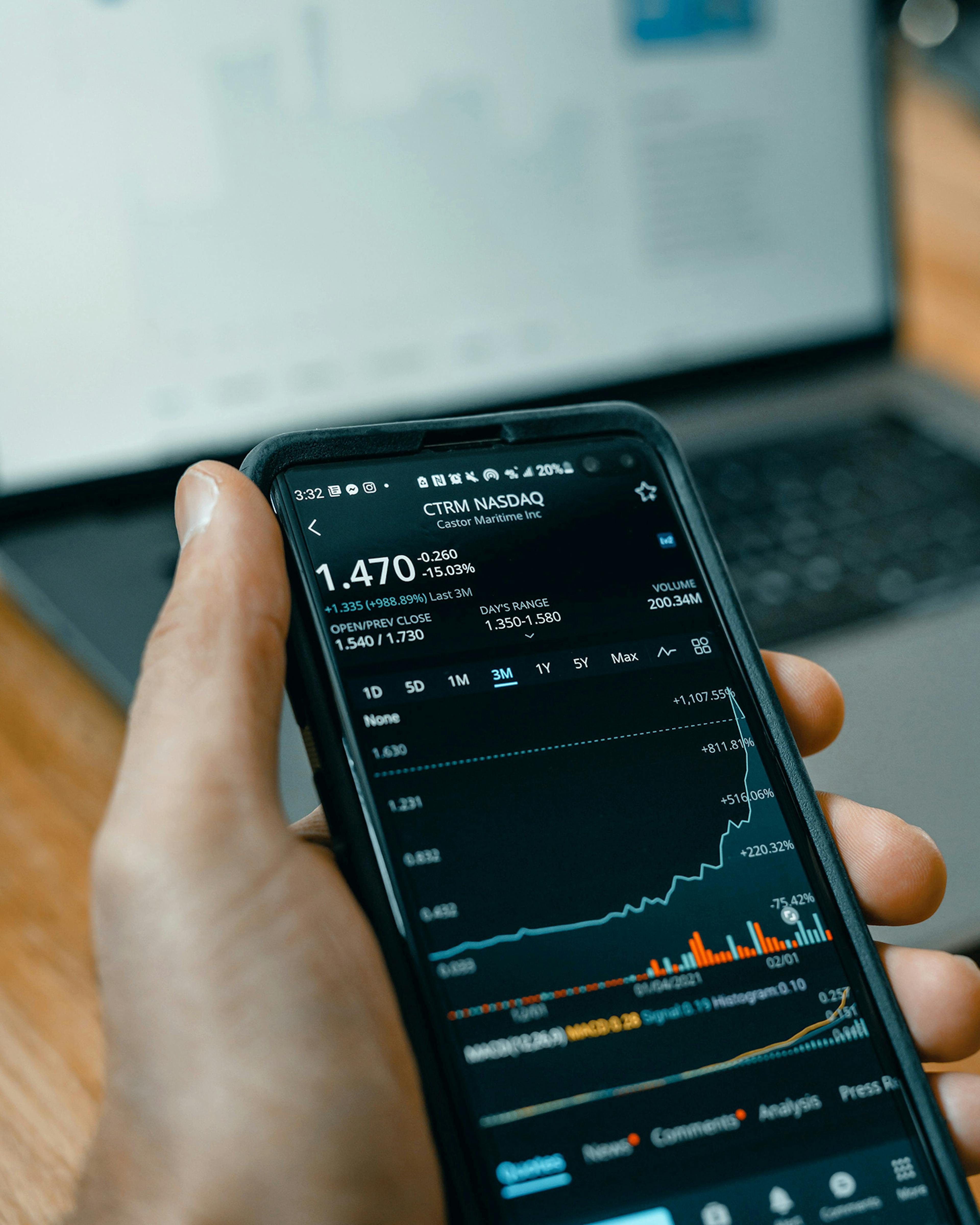
Inflation will remain central to investment strategies in 2022
Inflationary pressures, rising interest rates, and economic slowdown are expected to dominate 2022. On the stock market, this context is likely to favour companies that are able to generate growth while maintaining profit margins, as well as businesses that stand to benefit from inflationary factors.
After the global economy bounced back and prices rose sharply in 2021, investors now face a year marked by more persistent inflation, rising interest rates, and growth returning to a lower level.
Deemed temporary just a few months ago, inflation seems to have settled in for the long-term, fuelled by factors including energy prices and shortages in several business sectors. The consumer price index measured in OECD countries1 continued to rise in November to 5.8% – its highest level in 25 years.
“While we expect inflation to fall in 2022, it could prove more persistent than people tend to admit,” comments Frédéric Leroux, a member of the Carmignac Strategic Investment Committee. “Prices could continue to rise for some time before losing momentum, and inflation could be driven by a number of longer-lasting factors.”
The potential risks looming large in 2022 include a shutdown of the Chinese economy linked to the country’s “zero COVID-19” strategy, a possible continuation of commodity price rises and a geopolitical crisis in the Ukraine that would have knock-on implications for the cost of gas.
This inflationary environment will prompt more central banks – tasked with regulating economic activity – to raise their interest rates and push up those applied to borrowers and savers.
“For years, the US Federal Reserve acted on the basis of investor behaviour. Now, inflation is the driving force behind the actions of the Fed and also set to determine what the European Central Bank will do,” says Frédéric Leroux. “But the central banks will be trying to preserve growth at the same time as combatting the problem of inflation. It is an extremely tricky task that will require a lot of skill.”
Favourable factors
And this is the crux of the matter, since rising interest rates, coupled with possible new variants of COVID-19, the sharp increase in commodity prices, and the current Chinese economic slowdown, could weigh heavily on the global economy. We estimate that global growth could slow by 4% this year after a 5.5% increase in 2021.
“The start of the year will be lacklustre because of the Omicron wave,” predicts Raphaël Gallardo, Chief Economist at Carmignac. “Worldwide economic growth will slow in the first three quarters before rebounding in the last three months of the year fuelled by the measures China is likely to introduce to kickstart its economy.”
On the stock market, this backdrop of inflationary pressures and economic slowdown justifies the adoption of a defensive approach. It could favour companies that are able to secure growth while maintaining profit margins in a period of inflation by passing on higher costs to the end customer. Investors may also turn to issuers with less exposure to the economic cycle, such as those selling essential goods and services (food, personal care, health care, etc.).
In parallel, rising energy prices could support the energy sector, while banks stand to benefit from higher interest rates. Moreover, China remains a vital market over the long-term since new measures are expected that will support the world’s second-largest economic power.
Against this backdrop, active management2 could allow investors to stay ahead of the game. “It’s never easy to spot the perfect time to invest, but a context like the one we anticipate could generate opportunities for those who know how to seize them. However, as a long-term investor, our investment horizon is much longer than a few months,” notes Kevin Thozet, a member of the Carmignac Investment Committee.
Related articles

Marie-Anne Allier is Fund Manager of the Month by RankiaPro
This is a marketing communication.
This material may not be reproduced, in whole or in part, without prior authorisation from the Management Company. This material does not constitute a subscription offer, nor does it constitute investment advice. This material is not intended to provide, and should not be relied on for, accounting, legal or tax advice. This material has been provided to you for informational purposes only and may not be relied upon by you in evaluating the merits of investing in any securities or interests referred to herein or for any other purposes. The information contained in this material may be partial information and may be modified without prior notice. They are expressed as of the date of writing and are derived from proprietary and non-proprietary sources deemed by Carmignac to be reliable, are not necessarily all-inclusive and are not guaranteed as to accuracy. As such, no warranty of accuracy or reliability is given and no responsibility arising in any other way for errors and omissions (including responsibility to any person by reason of negligence) is accepted by Carmignac, its officers, employees or agents.
Past performance is not necessarily indicative of future performance. Performances are net of fees (excluding possible entrance fees charged by the distributor).
The return may increase or decrease as a result of currency fluctuations, for the shares which are not currency-hedged.
Reference to certain securities and financial instruments is for illustrative purposes to highlight stocks that are or have been included in the portfolios of funds in the Carmignac range. This is not intended to promote direct investment in those instruments, nor does it constitute investment advice. The Management Company is not subject to prohibition on trading in these instruments prior to issuing any communication. The portfolios of Carmignac funds may change without previous notice.
The reference to a ranking or prize, is no guarantee of the future results of the UCIS or the manager.
Risk Scale from the KIID (Key Investor Information Document). Risk 1 does not mean a risk-free investment. This indicator may change over time.
The recommended investment horizon is a minimum and not a recommendation to sell at the end of that period.
Morningstar Rating™ : © 2021 Morningstar, Inc. All Rights Reserved. The information contained herein: is proprietary to Morningstar and/or its content providers; may not be copied or distributed; and is not warranted to be accurate, complete or timely. Neither Morningstar nor its content providers are responsible for any damages or losses arising from any use of this information.
Access to the Funds may be subject to restrictions regarding certain persons or countries. This material is not directed to any person in any jurisdiction where (by reason of that person’s nationality, residence or otherwise) the material or availability of this material is prohibited. Persons in respect of whom such prohibitions apply must not access this material. Taxation depends on the situation of the individual. The Funds are not registered for retail distribution in Asia, in Japan, in North America, nor are they registered in South America. Carmignac Funds are registered in Singapore as restricted foreign scheme (for professional clients only). The Funds have not been registered under the US Securities Act of 1933. The Funds may not be offered or sold, directly or indirectly, for the benefit or on behalf of a «U.S. person», according to the definition of the US Regulation S and FATCA. Company. The risks, fees and ongoing charges are described in the KIID (Key Investor Information Material). The KIID must be made available to the subscriber prior to subscription. The subscriber must read the KIID. Investors may lose some or all their capital, as the capital in the funds are not guaranteed. The Funds present a risk of loss of capital.
In Switzerland: the prospectus, KIIDs and annual report are available at www.carmignac.ch, or through our representative in Switzerland, CACEIS (Switzerland), S.A., Route de Signy 35, CH-1260 Nyon. The paying agent is CACEIS Bank, Paris, succursale de Nyon/Suisse, Route de Signy 35, 1260 Nyon. Investors have access to a summary of their rights in French, English, German, Dutch, Spanish, Italian on the following link:https://www.carmignac.com/en_US
Carmignac Portfolio refers to the sub-funds of Carmignac Portfolio SICAV, an investment company under Luxembourg law, conforming to the UCITS Directive. The French investment funds (fonds communs de placement or FCP) are common funds in contractual form conforming to the UCITS or AIFM Directive under French law. The Management Company can cease promotion in your country anytime.
Copyright: The data published in this presentation are the exclusive property of their owners, as mentioned on each page.
CARMIGNAC GESTION 24, place Vendôme - F-75001 Paris - Tél : (+33) 01 42 86 53 35
Investment management company approved by the AMF
Public limited company with share capital of € 15,000,000 - RCS Paris B 349 501 676
CARMIGNAC GESTION Luxembourg - City Link - 7, rue de la Chapelle - L-1325 Luxembourg - Tel : (+352) 46 70 60 1
Subsidiary of Carmignac Gestion - Investment fund management company approved by the CSSF
Public limited company with share capital of € 23,000,000 - RC Luxembourg B 67 549


